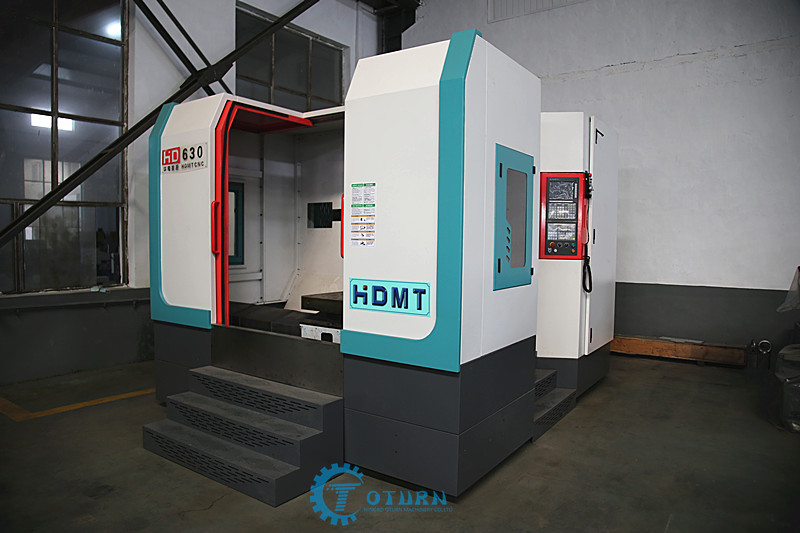Learn how to choose the right spindle range and ensure that your CNC machining center or turning center runs an optimized cycle. #cnctechtalk

Whether you are using a CNC milling machine with a spindle rotating tool or a CNC lathe with a spindle rotating workpiece, larger CNC machine tools have multiple spindle ranges. The lower spindle range provides more power, while the higher range provides higher speed. It is important to ensure that the machining is completed within the proper spindle speed range to achieve the best productivity. Here are five tips for choosing the right range:
The machine tool manufacturers publish the spindle characteristics in their operating manuals. There you will find the minimum and maximum rpm for each range, as well as the expected power in the entire rpm range.
If you have never studied these important data, your cycle time is probably not optimized. To make matters worse, you may put too much pressure on the spindle motor of the machine, or even stop it. Reading the manual and understanding the characteristics of the spindle can help you optimize the productivity of your machine.
There are at least two spindle range change systems: one is a system with a multi-winding spindle drive motor, and the other is a system with a mechanical drive.
The former change the range electronically by changing the motor windings they use. These changes are almost instantaneous.
A system with a mechanical transmission usually drives directly in its highest range and engages the transmission in a lower range. The range change may take a few seconds, especially when the spindle must stop during the process.
For CNC, the change of the spindle range is somewhat transparent, because the spindle speed is specified in rpm, and the S word of the specified speed will also make the machine select the relevant spindle range. Assume that the low-speed range of a machine is 20-1,500 rpm, and the high-speed range is 1,501-4,000 rpm. If you specify the S word of S300, the machine will select the low range. The S word of S2000 will make the machine select the high range.
First, the program may cause unnecessary changes in the scope between tools. For mechanical transmission, this will increase cycle time, but it may be overlooked because it only becomes apparent when some tools take longer to change than others. Running tools that require the same range in sequence will reduce cycle time.
Second, the spindle speed rpm calculation for powerful roughing operations may place the spindle at the lower end of the high spindle range, where power is limited. This will exert excessive pressure on the spindle drive system or cause the spindle motor to stall. A knowledgeable programmer will slightly reduce the spindle speed and choose the highest speed in the low range, where there is enough power to perform the machining operation.
For the turning center, the change of the spindle range is done by M code, and the higher range usually overlaps with the lower range. For a turning center with a three-spindle range, the low gear may correspond to M41 and the speed is 30-1,400 rpm, the middle gear may correspond to M42, and the speed is 40-2,800 rpm, and the high gear may correspond to M43 and the speed is 45-4,500 rpm.
This applies only to turning centers and operations that use a constant surface speed. When the surface speed is constant, the CNC will continuously select the speed (rpm) according to the specified surface speed (feet or m/min) and the diameter currently being processed.
When you set the feedrate per revolution, the spindle speed is inversely proportional to time. If you can double the spindle speed, the time required for related machining operations will be cut in half.
A popular rule of thumb for spindle range selection is roughing in the low range and finishing in the high range. Although this is a good rule of thumb to ensure that the spindle has sufficient power, it does not perform well when considering speed.
Consider the 1-inch diameter workpiece that must be rough turned and fine turned. The recommended speed of the roughing tool is 500 sfm. Even at the maximum diameter (1 inch), it will produce 1,910 rpm (3.82 times 500 divided by 1). A smaller diameter will require a higher speed. If the programmer chooses the low range based on experience, the spindle will reach the limit of 1,400 rpm. Assuming enough power, the roughing operation will be completed faster in a higher range.
This also applies only to turning centers and roughing operations that require a constant surface speed. Consider rough turning a 4-inch diameter shaft with multiple diameters, the smallest of which is 1 inch. Assume that the recommended speed is 800 sfm. At 4 inches, the required speed is 764 rpm. The low range will provide the required power.
As the roughing continues, the diameter becomes smaller and the speed increases. At 2.125 inches, the optimal machining needs to exceed 1,400 rpm, but the spindle will peak in the low range of 1,400 rpm, and each continuous roughing process will take longer than it should be. It would be wiser to switch to the middle range at this time, especially if the range change is instantaneous.
When the program enters the machine, any time saved by skipping the programming preparation can easily be lost. Please follow the steps below to ensure success.
The parameters tell the CNC every detail of the specific machine tool being used and how to use all CNC features and functions.
Post time: Jun-24-2021
